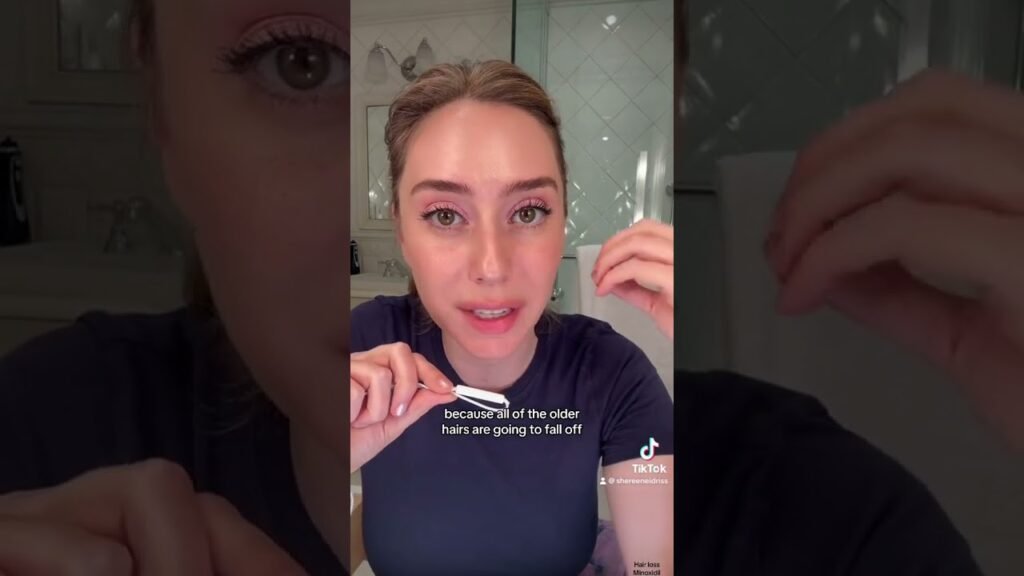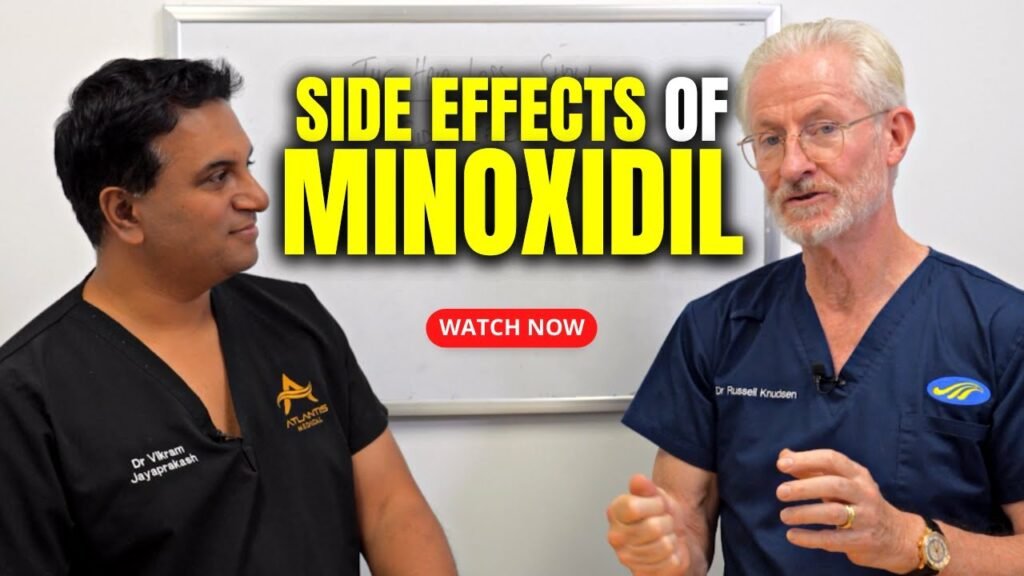Understanding Minoxidil: What It Is and How It Works
Minoxidil is a widely recognized medication primarily used to stimulate hair growth and slow down baldness. Originally developed as an oral medication for high blood pressure, researchers discovered its hair growth side effects, leading to the development of topical formulations specifically for treating hair loss. Available over-the-counter in various strengths, Minoxidil is a key ingredient in many hair regrowth products. It is particularly effective in treating androgenetic alopecia, commonly known as male or female pattern baldness, by prolonging the anagen phase of hair growth.
How Minoxidil Works
The mechanism by which Minoxidil promotes hair growth is not entirely understood, but it is believed to work by improving blood flow to the hair follicles. By widening the blood vessels, Minoxidil increases nutrient and oxygen supply to the hair follicles, which may lead to thicker and healthier hair strands. This enhanced follicular activity can result in the regrowth of hair in areas affected by thinning. Users often report visible results after consistent application over several months, as hair growth is a slow and gradual process.
Application and Effectiveness
Minoxidil is typically applied topically to the scalp, and its important to follow the recommended dosage and application instructions for optimal results. The product is available in various forms, including foams and solutions, allowing users to choose the one that best suits their preferences. While some individuals may experience significant hair regrowth, others might see only moderate improvements. Factors such as the extent of hair loss, the duration of use, and individual response to treatment can all influence effectiveness. Its crucial to maintain regular application, as discontinuation can lead to the resumption of hair loss.
Common Side Effects of Minoxidil: Is Acne One of Them?
Minoxidil is a popular topical treatment widely used for hair growth and combating hair loss. While it is generally well-tolerated, users may experience some side effects. Understanding these potential reactions can help users manage them more effectively. Among the common side effects are scalp irritation, itching, and dryness. However, users often question whether acne is also a side effect of using minoxidil.
Is Acne a Side Effect of Minoxidil?
While acne is not typically listed as a direct side effect of minoxidil, some users have reported experiencing breakouts after starting the treatment. This could be due to several factors. First, the alcohol and propylene glycol present in many minoxidil formulations can cause skin irritation or clog pores, potentially leading to acne. Additionally, the increased oil production associated with hair growth might also contribute to breakouts in some individuals.
Managing Skin Reactions
For those concerned about acne or other skin reactions, there are ways to minimize these effects while using minoxidil. Proper application is crucial; ensure that the product is applied only to the scalp and not the surrounding skin. If acne develops, consider using a non-comedogenic cleanser to keep the skin clean and free from excess oil. Additionally, switching to a minoxidil formulation that does not contain propylene glycol may reduce the risk of acne for some users.
Safe Application Techniques for Minoxidil to Prevent Acne
When using minoxidil for hair growth, its crucial to apply it safely to prevent unwanted side effects like acne. Acne can occur when minoxidil clogs pores or irritates the skin. To minimize this risk, start by ensuring your face and hands are clean before application. Use a gentle cleanser to remove any dirt or oil, which can exacerbate acne when combined with minoxidil. Additionally, always apply the product to a dry scalp, as a wet scalp can increase the likelihood of the solution spreading to facial areas, potentially causing breakouts.
Targeted Application
Focus on applying minoxidil directly to the areas experiencing hair thinning, using a dropper or spray to maintain precision. This targeted application helps to avoid excess solution spreading to the face and other areas where acne might develop. After applying, gently massage the solution into the scalp using your fingertips. Be cautious not to over-apply, as using more than the recommended amount can increase the risk of it seeping onto facial skin.
Post-Application Care
After applying minoxidil, thoroughly wash your hands to remove any residual solution. This step is essential to prevent accidental transfer to other skin areas. Additionally, avoid touching your face after application to minimize the chance of clogging pores with minoxidil residue. Consider incorporating non-comedogenic skincare products into your routine, as these are less likely to cause acne and can help maintain clear skin while using minoxidil. If acne persists, consult with a dermatologist for personalized advice and possible adjustments to your hair regrowth regimen.
Combining Skincare with Minoxidil: Tips for Clear Skin
When incorporating Minoxidil into your routine, maintaining clear skin can be a concern, especially for those with sensitive or acne-prone skin. Its crucial to select skincare products that complement Minoxidil and enhance its benefits without causing irritation. Opt for gentle, non-comedogenic cleansers and moisturizers to avoid clogging pores. Products containing ingredients like hyaluronic acid can help maintain skin hydration, which is essential when using Minoxidil, as it can sometimes cause dryness.
Choosing the Right Products
To minimize potential side effects, consider using fragrance-free and alcohol-free products. These formulations are less likely to irritate the skin or exacerbate any dryness caused by Minoxidil. Incorporating a broad-spectrum sunscreen into your morning routine is also vital, as it protects the skin from UV damage and prevents the exacerbation of any redness or sensitivity.
Application Tips
Proper application of Minoxidil can also play a role in maintaining clear skin. Ensure that the product is fully absorbed before applying any other skincare products to prevent pilling or uneven absorption. Its advisable to apply Minoxidil on a clean, dry scalp and allow it to dry completely before proceeding with other products. For those who use makeup, waiting at least 15 minutes after applying Minoxidil can help ensure that the product has adequately absorbed, reducing the risk of skin issues.
Expert Advice: Managing Acne While Using Minoxidil
If youre using Minoxidil for hair growth and experiencing acne as a side effect, youre not alone. Minoxidil, while effective for promoting hair regrowth, can sometimes lead to skin issues, including acne. Understanding how to manage this side effect can help you continue your treatment without compromising your skin health.
Consult a Dermatologist
The first step in managing acne while using Minoxidil is to consult with a dermatologist. A skin expert can provide personalized advice and recommend products that can help balance your skins needs. They may suggest non-comedogenic cleansers and moisturizers that wont clog pores, as well as acne treatments that are safe to use alongside Minoxidil. Your dermatologist can also evaluate whether the acne is indeed a result of Minoxidil or if other factors might be contributing.
Maintain a Consistent Skincare Routine
A consistent skincare routine is crucial when dealing with acne while using Minoxidil. Cleanse your face twice daily with a gentle cleanser to remove excess oil and prevent pore blockage. Incorporate a lightweight, oil-free moisturizer to keep your skin hydrated without exacerbating acne. Consider using a salicylic acid or benzoyl peroxide treatment on affected areas, but always patch-test new products to ensure they dont irritate your skin further.
Adjust Application Techniques
To minimize the risk of acne, adjust how you apply Minoxidil. Ensure that you use the recommended amount and apply it only to the scalp, avoiding contact with the face and other acne-prone areas. Wash your hands thoroughly after application to prevent accidental transfer of the product to your face. If you notice that acne persists despite these measures, discuss with your dermatologist whether altering the concentration or formulation of Minoxidil might be beneficial.


